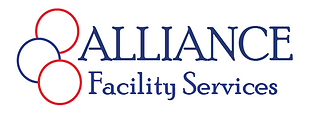7 Supplier Procurement KPIs That Are Worth Measuring

March 1, 2023 by Medigroup
Imagine trying to drive across a bridge that has no underlying support structures. The bridge might be arrow straight and beautiful to look at, but it’s destined to collapse and fall into the river without proper support.
Your purchasing and procurement relationships with suppliers may feel like that unsupported bridge – without the right KPIs or key performance indicators. It might look great on the surface, but it will crumble over time without solid supplier performance metrics.
How Supplier KPIs Benefit Your Business
Your procurement teams must use purchasing KPIs to ensure your vendors meet and even exceed their obligations as outlined in your contracts. Purchasing KPIs benefit your business by helping you better analyze and understand your suppliers’ performance. They measure supplier output over time and identify areas that need improvement.
Procurement KPIs also benefit your business by ensuring you’re getting what you’ve paid for. You can use minimal and basic KPIs to confirm that your supplier delivers a product or service on time. If your contract is more complex and your expectations change or evolve, your supplier KPIs will be more thorough. The data you collect will provide more comprehensive and important insights.
In either case, your KPIs should be easy to understand by every member of your procurement team. They should provide you with a wide range of qualitative and quantitative performance metrics that enhance your overall analysis and insights. You can start by measuring the following seven supplier performance metrics:
Lead Times
Lead times are critical in business. We define lead time as the period between when a supplier receives an order and when they ship the order. Your KPI measures the lead time in days and compares the quoted delivery time with the actual delivery time. It measures the frequency of late deliveries, and how significantly they impact your business or production schedule.
Thanks to Amazon and other online distributors, we’ve grown accustomed to fast, reliable delivery services. Purchasing and procurement professionals have that same expectation.
Contract Compliance
Your contract compliance KPI should confirm that your supplier delivers what they promised to deliver during your contract negotiations. It should tell you whether they have honored your agreements on pricing and price increases. And whether they have stuck to promised delivery dates. Most of all it should tell you about the level of service you are receiving. Your procurement KPI should strive for 100% in terms of supplier contract compliance.
Defect Rates
Quality control is a critical KPI for the buyer-supplier relationship. A supplier’s defect rate calculates the number of damaged or faulty products they delivered, often measured as defects per million. It indicates the supplier’s reliability and trustworthiness. You can further categorize the defect rate into the types of faults and the time your supplier takes to correct them.
Return on Investment
Always include a KPI that evaluates your ROI. This allows you to measure your overall budget against any cost savings you’ve achieved by using that supplier. Your ROI KPI reveals your supplier’s cost-effectiveness. Keep in mind that short-term savings don’t automatically lead to long-term profitability.
Customer Service
Customer service should be one of your most valued supplier performance metrics. The customer service KPI lets purchasing and procurement professionals rate their overall experience with their suppliers. It quantifies their customer service experience with each supplier in a variety of ways and answers questions like:
- Did the supplier handle complaints and issues professionally and efficiently?
- Was the supplier easy to communicate with?
- Did the supplier provide a single point of contact or…
- Did you have to deal with multiple people within the supplier’s organization?
Remember that good customer service cuts both ways. You should also survey your suppliers to find out how easy you, as the customer, are to work with. Ask your suppliers for suggestions about how your relationship can be improved.
Innovation
When your procurement team works closely with your suppliers, you gain a unique opportunity to drive product innovation. This innovation KPI can be challenging to measure. However, you can use it to keep supplier prices down by requiring them to innovate improvements in product design, alternative materials, or components that reduce costs, improve longevity, or increase product efficiency.
Risk and Transparency
The risk and transparency KPIs are important because procurement professionals need to know that their suppliers are not only financially stable but operating in compliance with government regulations and applicable laws.
With this purchasing KPI, suppliers must offer proof that they are compliant and stable. This helps protect your company’s brand and reputation. You should also require your suppliers to implement the latest cyber-security measures. You can use any one of several third-party services to track important factors like supplier credit risks.
Keep in mind that each newly implemented supplier contract comes with uncertainty and risk. This underscores the importance of being diligent about your supplier KPIs. Avoid growing complacent about monitoring and maintaining your suppliers’ performance metrics. Remember that it’s your responsibility as a procurement professional to ensure your company’s success.
If you are interested in learning more about managing suppliers, maximizing your supplier relationships with procurement KPIs, and saving money for your healthcare organization or practice, contact MediGroup – a healthcare GPO today.















